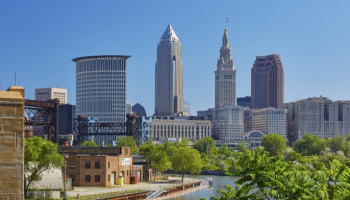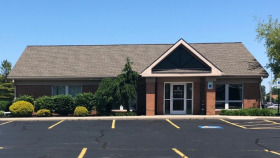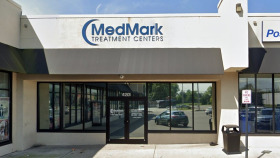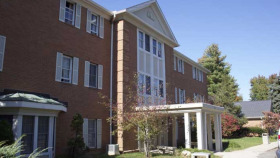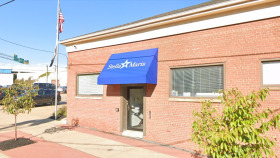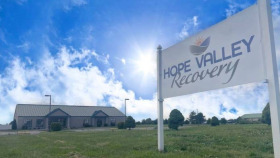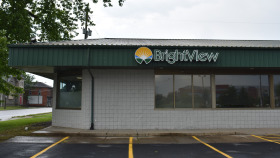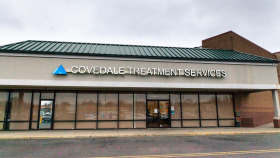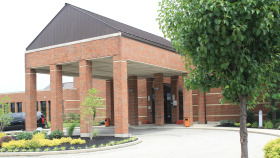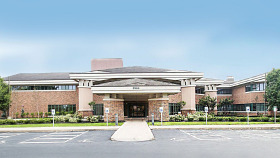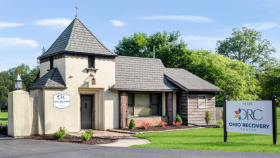Expert Insights
Drug and alcohol related statistics in Ohio tell a grim story. My experiences with the public health effects of addiction have confirmed the rising demand for social services, emergency interventions, and a weakened overall health and stability of a community.
In my years as a nurse practitioner, I’ve seen firsthand how prevention and treatment are vital public health priorities. These must include creative measures to address prevention, education, and treatment for all ages.
In 2023, there were 35.9 fentanyl and methamphetamine-related deaths per 100,000 people, which ranked the state as the fifth highest in the nation according to the National Center for Drug Abuse Statistics.
When recording the overall number of unintentional drug-related deaths according to the CDC, Ohio experienced a decrease in 2023 for the second consecutive year, but it still has one of the highest death rates in the country.
~ Gayle Morris, BSN, MSN
How Much Does Drug Rehab Cost in Ohio?
Ohio is ranked 25th nationwide in terms of addiction treatment affordability, with an average cost of drug and alcohol rehab of $56,688 (without insurance).
- Medical detox is the most expensive, with an average cost of $139,757
- Long-term inpatient drug rehab in Ohio costs an average of $50,024
- Outpatient addiction treatment in Ohio costs an average of $8,312
- Outpatient methadone treatment is the most affordable, with an average cost of $7,385
The exact cost of drug or alcohol rehab in Ohio varies widely and depends on several factors:
- Inpatient vs. outpatient
- Where the facility or detox center is located
- Insurance plans accepted
- Amenities and features (luxury vs. standard)
- Length of stay
How to Pay for Drug Rehab in Ohio
As of 2024, there were over 680 drug rehab facilities across the state of Ohio. These facilities accept several payment methods. Of those treatment facilities, the following numbers reflect how many accept their respective payment methods:
There are several ways to pay for addiction treatment centers that go beyond self pay and help reduce your financial expenses. Knowing these options can help you have a productive discussion with the financial counselor at the treatment center of your choice.
Private Pay + Insurance
Private insurance plans are provided by commercial insurance providers rather than government entities. They cover a range of healthcare services, including treatment for substance abuse and mental health conditions. Plans vary widely in terms of your coverage, costs, and benefits.
Some people prefer to pay the cost of rehab out of pocket to retain privacy so their insurance provider is unaware they require addiction treatment. These are some of the major insurance carriers in Ohio.
- Aetna
- Ambetter
- Anthem
- Anthem Blue Cross and Blue Shield
- Buckeye Health- Medicaid managed care
- CareSource – Medicaid managed care
- Cigna
- Humana
- Kaiser Permanente
- Medical Mutual
- Molina Healthcare
- Paramount
- SummaCare
- United Healthcare
Medicaid
Medicaid is a comprehensive package of healthcare coverage that’s funded jointly by the federal and state governments. Ohio Medicaid offers free and low cost coverage when you qualify. Eligibility criteria include income, citizenship, social security number, and a set of physical criteria that can include pregnancy, blindness, an age of 65 and older, or if you have a disability or live with someone with a disability.
Ohio Medicaid is administered through the Ohio Department of Medicaid. After enrollment, you are assigned a Managed Care Organization that may include Buckeye Health or CareSource. Once enrolled, these insurance providers answer questions about coverage and help you find a healthcare provider in your area.
Medicare
Medicare is a federally funded program for people 65 and older or individuals younger than 65 with specific disabilities or health conditions. Medicare has two parts that provide coverage: A and B. Medicare Part A covers inpatient care in hospitals or skilled nursing facilities and Medicare Part B covers outpatient services including doctor’s visits, durable medical equipment, and preventive care services like screenings or vaccines.
Medicare helps cover drug and alcohol addiction treatment during residential or inpatient care and for outpatient programs. The Centers for Medicare and Medicaid Services administers Medicare. You may purchase Medicare Advantage or a Medicare Supplement Plan through a commercial insurance provider to expand the Original Medicare benefits.
Military Insurance
You may be eligible for military health benefits depending on several factors, including the length of time you were on active duty and whether you received an honorable discharge. Ohio residents are eligible for TRICARE, which is a premium-based government insurance plan available worldwide to U.S. military personnel not on active duty.
In Ohio, military personnel, veterans, retirees, and their families may be eligible for OhioCares. This is a collaborative effort between state and local agencies developed to support behavioral health concerns. The partnership identifies local community resources that address mental health and substance use disorders.
Tribal Programs
The Indian Health Service (IHS) divides the U.S. into 12 geographical areas and each has a unique group of tribal members. Grants are awarded by the IHS Office of Clinical and Preventive Services to tribal organizations to combat substance abuse and suicide.
Ohio has received six grants to address tribal issues, such as tracking prescription medication, researching solutions for the opioid crisis, and researching education programs related to substance abuse in the school systems. Tribal members can apply to their governing body for funding to help cover the cost of drug rehab.
Other Low-Cost Options
Several low cost options make addiction treatment more accessible. Personal loans may be the fastest way to receive attention. You can set a repayment schedule tailored to your budget. However, some treatment centers also offer more help.
- Payment program: These may fit within your budget and most do not charge the interest rate that normally accompanies a bank loan.
- Sliding scale fees: Treatment cost is based on your income and ability to pay. It typically requires documented proof of income.
- Grants and scholarships: The Substance Abuse and Mental Health Services Administration (SAMHSA) is one of several agencies that offer grants and scholarships, including, local governments, tribal communities, non-profit organizations, and other community-based groups.
- Faith-based programs: Many people in recovery base their treatment on religious beliefs and values, which offer a significant advantage when they match yours. Financial assistance is often available.
- Crowdfunding: It may be difficult to ask for help publicly, but seeking professional help is a critical step toward a healthier and happier life.
Resources
- Ohio Population 2020 (Demographics, Maps, Graphs). (n.d.). Worldpopulationreview.com.
- Drug Overdose. (2021). Ohio.gov.
- America’s Health Rankings. (2021). Trend: Excessive Drinking, Ohio, United States. Analysis of CDC Behavioral Risk Factor Surveillance System. United Health Foundation..
- Walker, M. S., Kaimal, G., Gonzaga, A., Myers-Coffman, K. A., & DeGraba, T. J. (2017). Active-duty military service members’ visual representations of PTSD and TBI in masks. International Journal of Qualitative Studies on Health and Well-Being, 12(1), 1267317..
- Goretti, S., Sanchéz, M. D. C. S., Borja, P. L., Rivera, G. B., & Lara, M. R. (2017). The relationship between personality disorders and substance abuse disorders. European Psychiatry, 41(S473-S474).
- U. S. Department of Health and Human Services. (2016). Chapter 6: Health Care Systems and Substance Use Disorders. Substance Abuse and Mental Health Services Administration (US). Office of the Surgeon General (US). Facing Addiction in America: The Surgeon General’s Report on Alcohol, Drugs, and Health.



